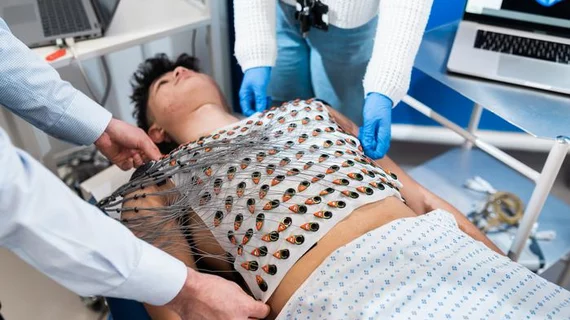New vest developed by cardiologists uses advanced heart imaging to screen for sudden cardiac arrest
Researchers have developed a reusable vest capable of mapping the heart’s electrical activity in just five minutes, sharing their findings in the Journal of Cardiovascular Magnetic Resonance.[1]. The group—made up of cardiologists and engineers from the United Kingdom, Austria, Spain and the United States—thinks this new vest could be a state-of-the-art screening tool for identifying patients at risk of sudden cardiac arrest and other critical heart conditions.
The electrocardiographic imaging (ECGI) vest includes 256 sensors that, when combined with MRI images, produce 3D digital models of a patient’s heart. Its electrodes can be washed between uses and do not require a layer of gel.
Gaby Captur, MD, PhD, a consultant cardiologist with the Royal Free London NHS Foundation Trust and senior lecturer at the University College London Institute of Cardiovascular Science, led the development of the vest. Her team received funding from both the British Heart Foundation and the Society for Cardiovascular Magnetic Resonance.
“We identified a problem in cardiology,” Captur said in a statement. “Heart imaging has made remarkable progress in recent decades, but the electrics of the heart have eluded us. The standard technology to monitor the heart’s electrical activity, the 12-lead electrocardiogram (ECG), has barely changed in 50 years. We believe the vest we have developed could be a quick and cost-effective screening tool and that the rich electrical information it provides could help us better identify people’s risk of life-threatening heart rhythms in the future.”
The team’s analysis includes data from 77 healthy volunteers who were imaged using the ECGI vest. The authors concluded that its use is “feasible and shows good reproducibility in younger and older participants.”
To date, more than 800 patients have been treated using this new screening tool. The group is currently exploring its options when it comes to the large-scale manufacturing of additional vests.
Click here to read the full analysis.

